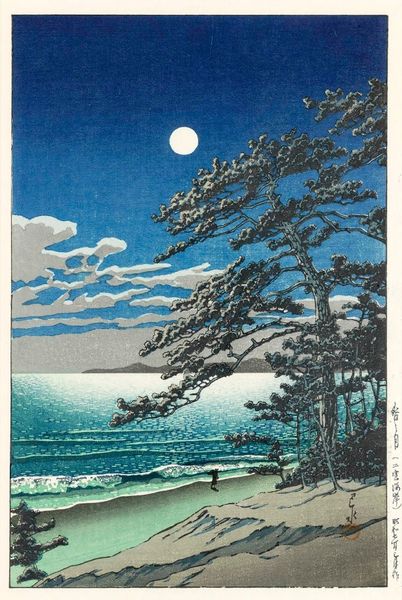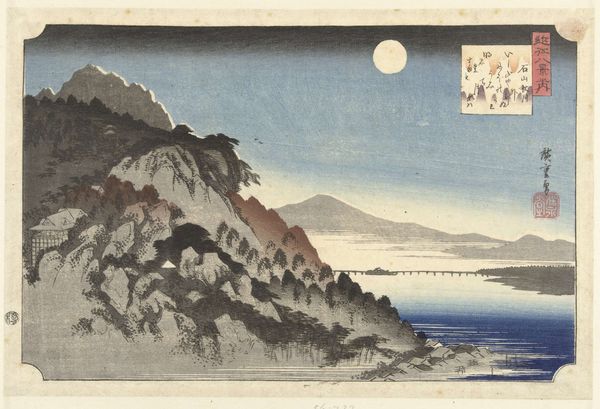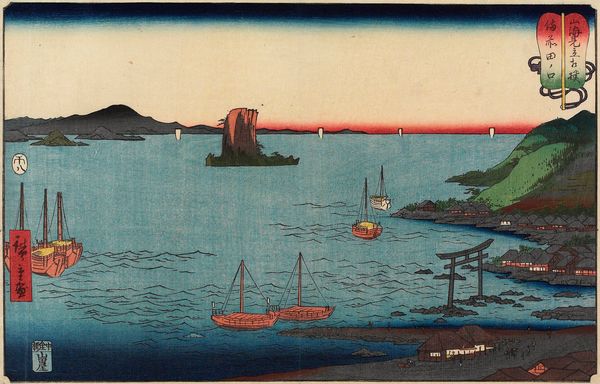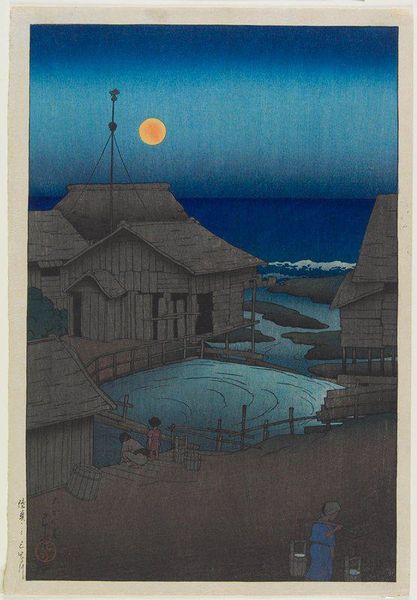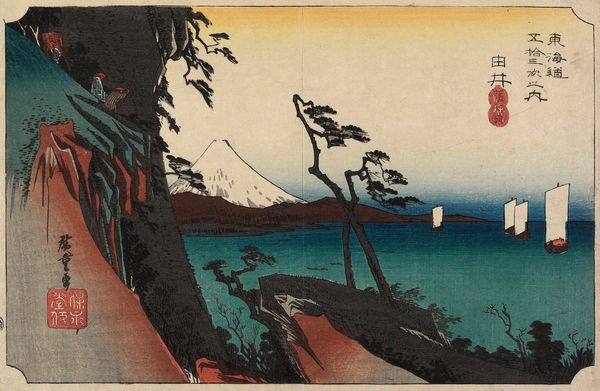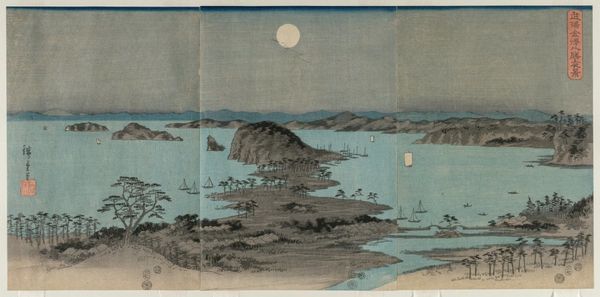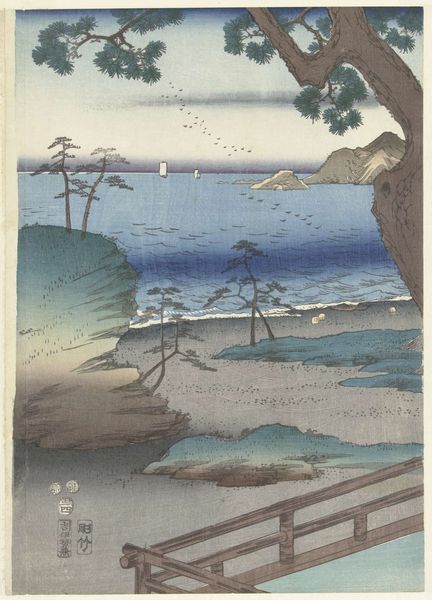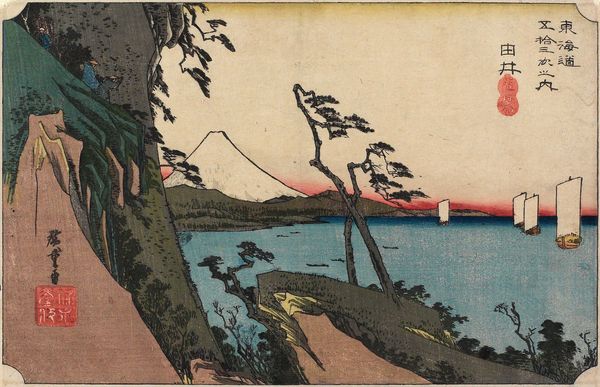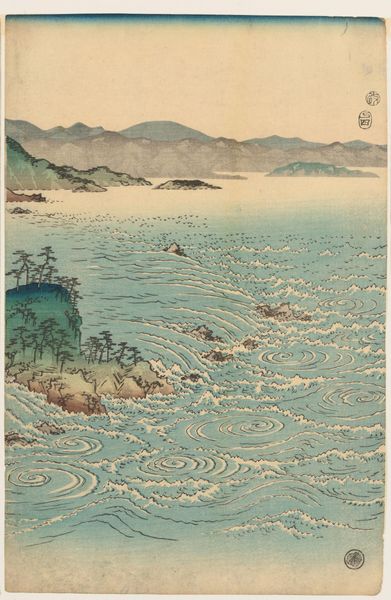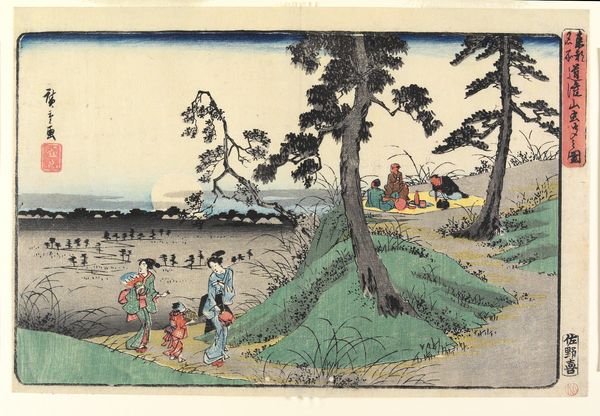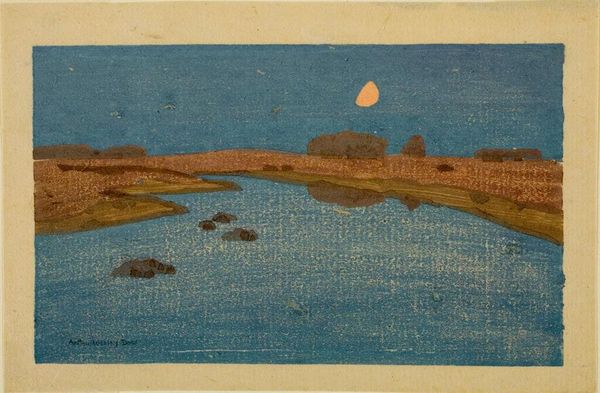
Copyright: Public domain Japan
Editor: Here we have Hasui Kawase's "Shichirigahama, Soshu" from 1930, a watercolor print. It's just so peaceful, a simple beach scene at night. What do you see in it? Curator: I'm immediately drawn to the materiality of this print. Notice how the layering of watercolor, a typically "craft" medium, is deployed in the service of depicting a modern scene, accessible and reproductive through printmaking techniques. It begs the question, who was this art intended for, and how does its method of production intersect with the rise of consumer culture at the time? Editor: That's interesting! I hadn't thought about the process of making the print itself. So, it's less about the beauty of the scene and more about how that beauty was manufactured and distributed? Curator: Not "less about" exactly. Instead, I would say the serene subject matter – the couple, the moonlight on the water – is inseparable from the economic and social forces enabling its creation and circulation. Consider the paper itself, where it was made and by whom. How would you see it then? Editor: Hmm, it's no longer a straightforward landscape. The material used and labor become central. It forces us to consider it as a commodity created within a specific cultural moment, using traditional techniques in what was, at that time, a modern way, with probably industrial influence. Curator: Exactly! We shift from viewing it as merely aesthetic to understanding its complex relationship to production, consumption, and even labor. Editor: That gives me a lot to think about. I'll definitely look at prints differently from now on. Thank you! Curator: My pleasure! Thinking through the social life of things illuminates our relationship to them and, ultimately, to each other.
Comments
No comments
Be the first to comment and join the conversation on the ultimate creative platform.

